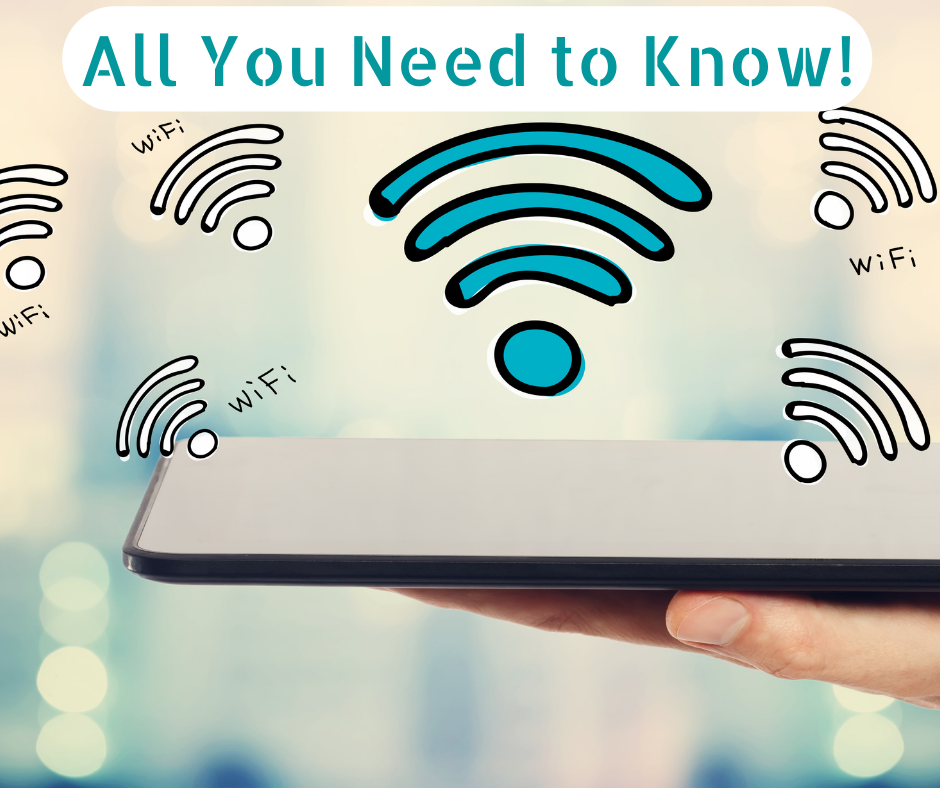
Wi-Fi: all you need to know!
One of the most popular ways to connect to the internet globally is through Wi-Fi. And it should come as no surprise given how quickly a Wi-Fi connection can be formed, how better signal speeds are made possible, and how nearly every input device already has a Wi-Fi component or can add a wireless adaptor.
However, it wasn’t always like this. Until Wi-Fi emerged as a more advanced option, Internet access was made through LAN cables at the beginning of the DSL era. Additionally, Wi-Fi comes in a variety of forms. Technology is always developing, and different standards serve to identify its advancement.
The following is a list of the most significant Wi-Fi standards:
- IEEE 802.11: This protocol is the cornerstone of wireless communication networks. In 1997, the first cellular standard was released, and it transferred data at a rate of 1 Mb / s. The standard’s creators, the Association of Electrical and Electronics Engineers, are identified by the initials “IEEE.” These standards are extensions of IEEE 802.11
- IEEE 802.11n: The replacement standard, Wi-Fi 4, was introduced in September 2009. Wi-Fi 4 can send data at up to 600 Mb/s and enables devices that transmit on the 2.4 GHz or the 5 GHz Band network.
- “IEEE 802.11ac”: The most popular kind of Wi-Fi network, known as Wi-Fi 5, was standardized towards the end of 2013. Wi-Fi 5 can achieve rates of up to 1733 Mb / s with a setup that has 4 antennas and is standardized for the 5 GHz.
Wi-Fi connection types
As mobile networks enter the domestic internet space, you have more options for wireless connections at home. There are benefits and drawbacks to each sort of wireless network, including signal quality and speed, just like with internet service. Here, we’ve listed a couple of them.
- Wireline: Today, a wireless router is used in the majority of households to access the internet. The ease of installation, portability within the Wi-Fi connection point’s range, and the capacity to link various devices are advantages. The drawbacks include a constrained bandwidth, slowed speed as even more devices join the same Wi-Fi connection, and possible disruption from other antenna arrays in the house.
- Jetpack or portable hotspot: A growing number of people are using mobile and specialized hotspots to connect securely while on the go. Your iPhone and a jetpack are two typical hotspot gadgets. Today, almost any mobile device or tablet can be temporarily used as a hotspot, which makes them a perfect alternative if you occasionally require one. It’s simple to use and doesn’t call for the purchase of additional equipment, but it can quickly drain your bandwidth and battery life. However, a jetpack functions as a special mobile hotspot that, like a smartphone, can pick up signals from nearby cellphone towers. It supports more connections and has a wider Wi-Fi coverage area.
In fact, even the greatest wireless router may struggle to provide a strong Wi-Fi signal over a whole home or workplace. Because of this, it’s crucial to have the appropriate tools and knowledge to make the most of a Wi-Fi router.
LAN ports: A house router typically contains four LAN ports, allowing it to support a connection of up to four wire network equipment right out of the box. You must use a switch (or port), which increases the router’s Ethernet ports if you wish to establish a larger network. Most houses and even small enterprises don’t require more than 250 network nodes that can be connected by a standard home router, which is sufficient for most homes.
Ethernet (also known as Ethernet Networks), which has a speed limit of 100mbps (or roughly 13 bytes per second), and Gigabit Ethernet, which has a speed limit of 1 Gbps, are now the mainly two-speed specifications for LAN connections (or about 150 MBps). In other terms, the data on a CD (roughly 700 MB, or about 250 digital songs) may be sent via an Ethernet cable in around a moment. The same task requires Gigabit Ethernet and takes around 5 seconds. An Ethernet cable typically has a speed of 8 MBps, and a gigabit Ethernet port typically has a throughput of 45–100 MBps.
Networking using power lines
Wi-Fi is a superior addition to network connections because you presumably don’t want to run them everywhere. A Wi-Fi signal regrettably won’t reach some locations, like that area of the basement, either because they are too far away or have solid concrete walls separating them. Power cable converters are the ideal option in this situation.
Power cable connectors essentially convert the electrical cabling in your home into the wiring. To create the first power cable hookup, you require at least two power cable converters. The first adapter is linked to the router, while the second one is connected to an Ethernet-capable device located somewhere else in the building. Here is more information on power line gadgets.
The systems that enable that a power cable link can typically give is currently around half that offered by a Gigabit wired network.
Advice on Configuring a Wi-Fi Router
Here are some pointers to assist you in configuring a wireless router. You might just need one device to do the task, according to the area you want to cover with Wi-Fi. To get the greatest result out of the device, the router must be set up properly.
Keep your software up to date — to make sure your equipment is functioning at its best, you should benefit from firmware updates provided by the maker of your routers. It is advised that the router be set to automatically download any relevant firmware updates.
Bridge the divide between both the network and smart devices – If you discover that the Wi-Fi signal isn’t working well on your smart routers, you might need to move them nearer to the network to get the functionality you want. You might be a suitable candidate for a mesh node setup if this becomes a significant issue.
Leave Your Wi-Fi Router Alone
Examine what else might be hurting the strength of your Wi-Fi connection and your broadband speeds before you declare that your Wi-Fi router is ineffective.
Check again to make sure your wireless access point is anonymized first. A router may occasionally experience prolonged power outages and reset to its default settings. Without your notice, this could occur, making your Wi-Fi network public. It is no secret that when the entire neighborhood is stealing from you, your connection speeds will be appalling.
Nowadays, WPA2 (Wi-Fi Protected Entry 2) is advised as a considerably safer substitute for the more antiquated and insecure WEP.
Second, confirm that the uploading and downloading speeds promised by your internet provider are being met. Even though your contract specifies that you should receive 20 Mbps data rates, this does not guarantee that this is the case.
Last but not least, confirm that the PC you’re employing for the test is functional. Your poor internet speeds may be the result of process scheduling or a malicious program. However, many significant problems require a full rebuild of your os; a simple reboot frequently fixes them.






